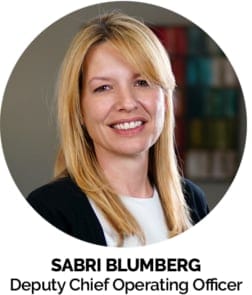Last updated on November 26th, 2025 at 08:18 pm
Last updated on November 13th, 2025 at 07:57 pm

Q: “I’m thinking about buying a second practice, but I’m not sure if now is the right time or what I should be looking for—what should I evaluate before making that kind of move?”
A: Okay, so this is a monster of a question—because there’s a lot to say about it. Like, what kind of practice are you thinking of buying? That alone can change the entire strategy. And since it’s a second practice, what should the metrics be? You can’t just go out and buy another location on a whim.
There are ways to do this that are relatively smooth—and ways to do it that will be a complete nightmare.
With that said, let’s dive in.
First Thing to Consider: Location & Distance
How far is this second practice from your original location?
This matters. Travel, management logistics, marketing—it all gets harder the farther apart they are. But even more important than location is this:
If You’re Still Stuck in the First Practice, You’re Not Ready
Here’s the bottom line:
You cannot buy a second location if you’re still stuck inside the first one.
If your original practice is still completely dependent on your production as the doctor—if the whole place collapses when you leave—then it’s too soon to open another one.
What happens if you try?
You’ll either have to divide your time between both practices and end up working 6–7 days a week, or your first practice will start to slump while you’re trying to build up the second one. And now you’re carrying two overheads that will inevitably spiral out of control.
Your First Practice Has to Run Without You
So, to keep this super simple:
Your first practice needs to be set up so you can take your attention off it.
Even if you’re thinking, “Oh, I’ve got a buddy who’ll run the second office,” or “I’ll send my associate over there,” and “I won’t really be involved…”
You’re kidding yourself.
Your name is on the door. You’re responsible for the bills. And unless you’ve already trained and tested these people, you have no idea if they can actually make money or keep the place afloat.
Think about it.
Even if you’ve got a new treatment coordinator, associate, and office manager all lined up to “handle” it… you don’t know their speed, their clinical philosophy, or their standards of care. You don’t know if they can diagnose properly or sell treatment plans effectively.
You have to work with them for a while first. You can’t just hand over a new practice and hope it works out.
Don’t Drain Your First Practice to Build Your Second
Let’s say you send your current office manager and team over to the second location. Cool. But now—who’s running your original practice?
You have to build the second practice in a way that doesn’t affect the first.
Here’s how to do that:
- Hire your new team before the second practice opens.
- Train them inside your current practice.
- They need to prove they can be productive—without you—as if they’re already running a separate office.
- Or, if you’re the one planning to go to the second location, start by pulling yourself out of production in your original office for a week and see what happens.
If your first practice can’t handle that? You’re not ready.

Buying Someone Else’s Practice? Be Careful With Their Staff
“I’ll just keep the staff that’s already there.”
Nope. That’s risky.
You don’t know them. You don’t know how they diagnose, how they communicate with patients, or what their clinical standards are. And if the selling doctor is leaving, now you’ve got new staff and a new associate you’ve never worked with.
Even if the selling doctor says they’ll stay on, ask yourself this:
If the practice was doing so great, why are they selling it?
They’re going to be even less motivated now—they’re no longer the owner, they’re just another employee. And guess what? You still have to pay them.
So When Is It a Good Time to Open a Second Practice?

We’re not saying don’t do it.
In fact, we want dentists to open more practices. We want private ownership to thrive—we want you to dominate corporate DSOs. But you have to do it right.
There’s a right way and a wrong way to do it.
And the wrong way is just… opening one.
Your organization has to be smooth before you expand. Systems in place. Team trained. Production stable without you. Then—and only then—are you ready to scale.
Conclusion:
Opening a second practice is not just a business decision—it’s a leadership one. If your first location isn’t running like a well-oiled machine without your hands on every lever, then the second location will only multiply your problems.
Build the systems. Train the team. Stress-test the structure.
Your first practice should be your prototype.
Your second should be a proven copy—not an experiment.
If you’re navigating a situation like this—or even thinking about it—and want help making the right moves, feel free to reach out to me at Sabrib@mgeonline.com or call 800-640-1140.
We’re here to make sure your next big step is the right one.




No Comments
Be the first to start a conversation